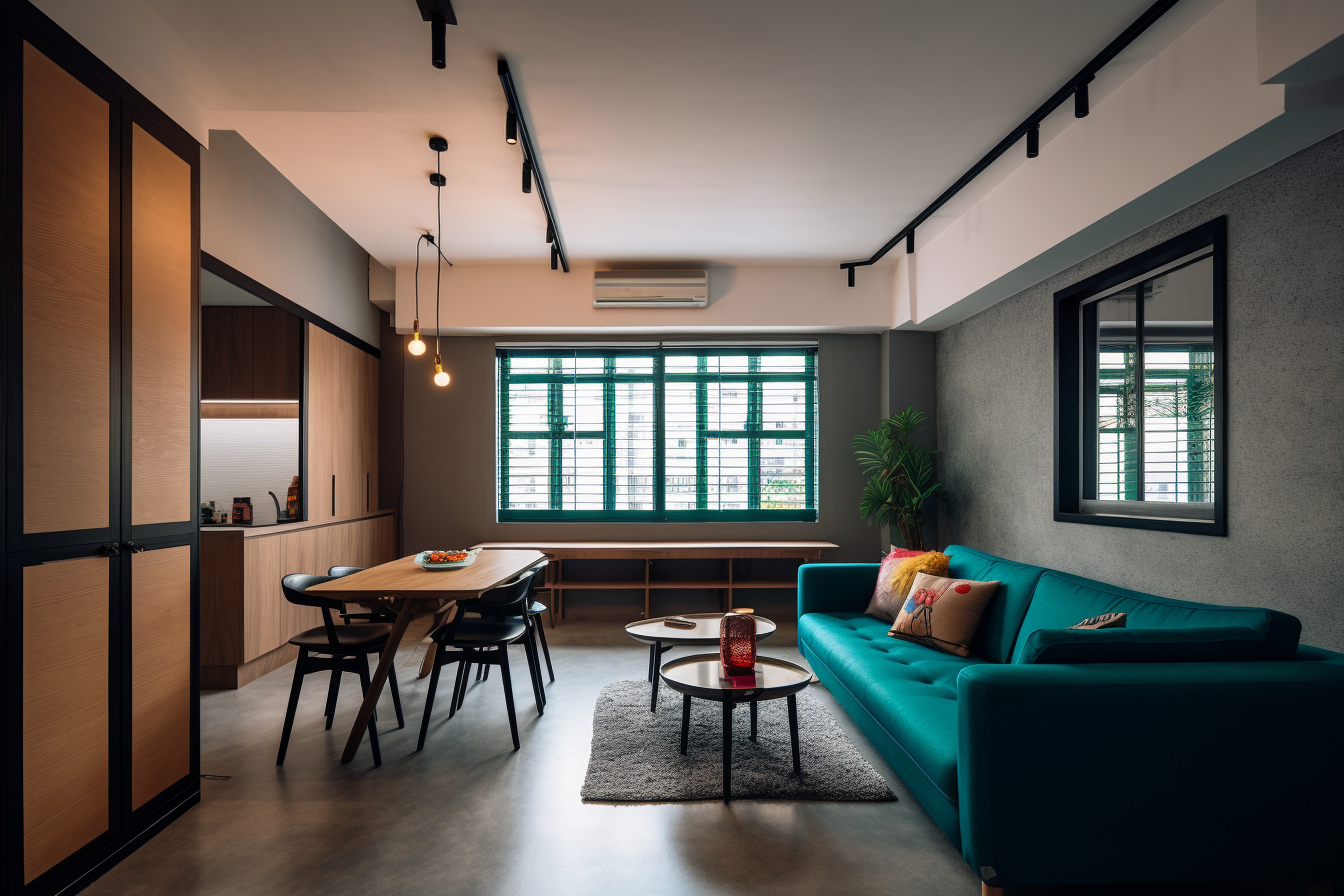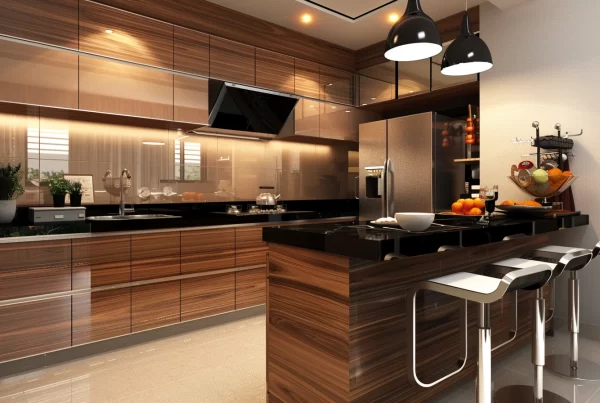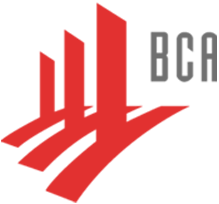If you’re embarking on a renovation journey for your Build-to-Order (BTO) or newly purchased resale flat in Singapore, you’re about to enter a complex financial landscape. Managing your personal finances is one thing, but navigating the intricacies of couple’s finances is another challenge altogether. Renovation costs in Singapore can range from $26,700 to $89,600 for a four-room BTO flat, making it one of the most substantial expenses in our lives. In this article, we explore the role of home renovation loans and guide you through the process of choosing the right one.
Before Deciding on Home Renovation Loans
Section 1: Understanding Renovation Loans in Singapore
Renovation loans in Singapore are designed exclusively for funding home renovation projects. These loans differ from home loans used for financing your property purchase and can be acquired from banks or the Housing Development Board (HDB). Renovation loans typically offer lower effective interest rates compared to personal loans. The interest on a renovation loan is calculated based on a monthly rest rate, while personal loans have a flat interest rate. Specific packages and restrictions dictate what your renovation loan can cover, and the funds may be disbursed directly to your interior designer or contractor. Loan tenures typically range from one to five years, and the maximum borrowing amount is either six times your annual salary or $30,000, depending on which is lower. If your loan requires disbursal in installments or to multiple suppliers, additional fees may be applicable.
Section 2: Estimating Your Renovation Budget
The budget for your renovation project is highly subjective and reliant on the aesthetic you intend to achieve. Depending on your future plans for the property, the expenses can vary significantly. If you plan to sell your flat in a few years, you might opt for minimal renovations. However, you’ll still need to make your place livable, which could involve costs like those under HDB’s Optional Component Scheme (OCS). The OCS costs vary based on your housing project, ranging from $5,000 to $9,000. If you’re not planning to sell and want your home to be your forever residence, renovation costs can range from $41,000 to $66,000, excluding furniture. The key is to prioritize your preferences and find a trustworthy contractor or interior designer who may command a higher price for their quality and service.
Section 3: How Much Can You Borrow with a Renovation Loan?
Renovation loans typically offer a maximum amount of $30,000 or six times your monthly salary, depending on which is lower. If you require a higher amount, you can potentially borrow more, but this may come with higher interest rates. Keep in mind your Total Debt Servicing Ratio, which plays a crucial role in loan approval.
Section 4: Using CPF for Renovation Loan Repayment
It’s important to note that Central Provident Fund (CPF) funds cannot be used to repay your renovation loan. CPF is primarily meant for retirement purposes and cannot be utilized for home renovation. However, you can consider using your CPF account for investments.
Section 5: Evaluating the Best Renovation Loan Options
To ensure timely repayment and avoid additional fees, choose a loan package that aligns with your budget and requirements. Banks may conduct checks to verify that the loan proceeds are used for the intended renovation projects. We’ve provided a comparison of various renovation loan options in the table below, based on a loan amount of $30,000 and a tenure of five years.
Section 6: Should You Opt for a Home Renovation Loan?
There are two perspectives on whether to take a home renovation loan:
- Taking the Home Reno Loan: Consider this option if you believe you can invest the borrowed money at a higher rate of return than the loan interest. The interest rates for renovation loans generally range from 2.88% to 5.8%. Your decision should be influenced by your confidence in surpassing prevailing rates and your desire to enhance your home.
- Start Saving Now: Some opt for saving instead of borrowing due to cash flow concerns. With early planning and investments, you might accumulate the required funds without the need for a loan. However, the suitability of this approach varies from person to person based on their investment risk, returns, and financial goals.
Section 7: Building Your Dream Home
Whether you choose to take a home renovation loan or save up for your renovation, discuss your financial strategy with your partner. Estimate the expenses for your BTO down payment, wedding, and home renovation budget. This comprehensive understanding will help you make informed decisions about whether to secure a home renovation loan.
Renovation Loan VS Personal Loans
So, you might be wondering, what sets renovation loans apart from personal loans? Loans play a significant role in managing financial needs, whether it’s for education, business, household expenses, or a major purchase.
Personal loans are the most common type, serving as a financial lifeline during emergencies or when facing temporary financial challenges. They are versatile, allowing you to use the funds for various purposes, making them a preferred choice for many. Financial institutions, like banks, provide personal loans based on your creditworthiness, and these loans can be used for a wide range of needs.
Home renovation is a classic example of why someone might seek a loan. Whether it’s urgent repairs to ensure safety or a desire to give your home a fresh, new look, renovation projects can come with a significant price tag. Sometimes, it’s not feasible to pay for these renovations upfront, or you might prefer spreading the cost over time rather than depleting your savings all at once. This is where different financing options come into play, including personal loans and renovation loans. To make the right choice, it’s essential to understand how these options fit your specific needs.
Let’s start with renovation loans. These loans are designed exclusively for home improvements, which could include new furniture, fixtures, lighting, major remodeling, or significant repairs. Such projects often come with substantial expenses. To address this, many people opt to borrow money from a financial institution and repay it in installments, rather than bearing the financial burden all at once. Even if you have the financial capacity to cover the expenses, borrowing can still be a financially wise choice for larger renovation projects.
On the other hand, personal loans offer more flexibility. When you take out a personal loan, you’re not limited to a specific purpose; you can use the funds at your discretion, including for home renovations. However, you still need to meet the lender’s eligibility criteria, such as having a credible borrowing history. =
When considering personal loans, the loan amount you can secure is typically determined by your income, with banks usually approving up to four times your monthly income. In the case of personal loans, the maximum amount can be substantial, such as S$250,000. Renovation loans, on the other hand, are usually smaller, with limits up to S$30,000. While renovation loans offer lower interest rates, personal loans provide more significant flexibility and loan amounts.
While personal loans may be more expensive in terms of interest rates, they can still be a practical choice. Both types of loans generally offer a maximum repayment period of up to five years, but it’s essential to consider your monthly repayment capacity before deciding. It’s crucial to avoid committing to a loan that might strain your finances later.
Before you choose between a personal loan and a renovation loan, assess your specific needs and financial situation. Personal loans provide greater flexibility and versatility, allowing you to use the funds as you see fit. However, renovation loans can be advantageous if they come with built-in insurance to cover unforeseen circumstances, like disability or death, which could benefit your family in the event of such tragic situations.
Loans can be a valuable tool to address immediate financial needs, but it’s crucial to be responsible and evaluate your repayment capabilities. Before embarking on your renovation journey, carefully consider which loan type best suits your requirements. Personal loans offer flexibility and a higher borrowing limit, making them an excellent choice for home makeovers and other expenses. However, if insurance coverage is a concern, renovation loans may be worth considering. Ultimately, the decision should align with your specific financial goals and the nature of your renovation project.
By carefully weighing your options and understanding your financial situation, you can embark on the journey of building your dream home in Singapore.







